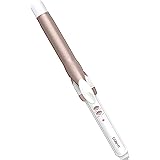Introduction to Reiki Healing
Reiki healing is a holistic therapy that originates from Japan, embodying a rich tradition steeped in principles that focus on the natural flow of energy within the human body. The term “Reiki” translates to “universal life energy,” illustrating the belief that this energy is present in all living things. Developed in the early 20th century by Mikao Usui, Reiki encompasses techniques that aim to channel this vital force to promote healing, relaxation, and overall well-being.
The core principle of Reiki revolves around the idea that energy flows through each individual. When this energy is balanced, individuals tend to experience physical, emotional, and spiritual harmony. However, blockages or imbalances in energy flow can lead to discomfort or illness. Practitioners of Reiki utilize a variety of techniques to assess and restore this energy balance. This is typically achieved through gentle hand placements or by using intention to direct energy to where it is needed most, thereby instigating the body’s natural healing process. The practitioner serves as a conduit, allowing the universal energy to flow through them to the recipient, with the intent of fostering relaxation and healing.
The reach of Reiki healing extends beyond just physical symptoms; it also encompasses mental and emotional aspects, addressing issues such as stress, anxiety, and depression. As a versatile modality, Reiki can complement conventional medicine and other alternative therapies, highlighting its integrative nature. In the following sections, we will delve into the breakthroughs in Reiki as a transformative healing modality, exploring how these advancements have influenced the practice and understanding of energy flow in healing contexts.
Understanding Energy Flow in Reiki
Reiki, a holistic healing practice rooted in Japanese tradition, fundamentally revolves around the concept of energy flow. At the heart of this practice lies ‘ki’ (often referred to as ‘chi’ or ‘prana’ in other cultures), which is understood as the vital life force energy that permeates all living beings. This energy is essential for maintaining physical, emotional, and spiritual wellness. When the energy flows freely within the body, it facilitates a state of balance, promoting overall health. Conversely, any disruptions or blockages in this energy flow can lead to various ailments, manifesting both physically and emotionally.
Blockages in the energy flow can result from several factors, including stress, trauma, negative emotions, and environmental influences. These disruptions may present as physical symptoms, such as chronic pain or fatigue, or they may contribute to emotional challenges, including anxiety and depression. Reiki practitioners believe that by channeling this universal life force energy, they can help individuals identify and release these blockages, restoring harmony and enhancing well-being.
The process of Reiki involves gentle touch or hovering hands over specific areas of the body, allowing the practitioner to tap into the flow of ki. This connection fosters a compassionate environment where healing can occur. As the energy is directed toward the client, it encourages the release of stagnant energy, facilitating emotional release and physical rejuvenation. Clients often report feelings of deep relaxation and calmness during and after a session, indicating a shift towards a healthier energy flow. Through regular Reiki sessions, individuals can cultivate a sustainable practice of balancing their energy, promoting a more resilient state of health and emotional stability.
The Science Behind Reiki Healing
Reiki healing, a form of biofield therapy, has garnered interest not only from practitioners and patients but also from the scientific community. This interest has prompted a number of research studies focused on its efficacy and mechanisms. Central to these studies is the premise of energy flow within the human body and the impact it may have on physical and emotional wellness. At its core, Reiki healing revolves around the manipulation of this energy, understood by practitioners as a life force that flows through all living beings.
Research has suggested that this life force can be connected to concepts in quantum physics and electromagnetic fields. For instance, the human body generates measurable electromagnetic fields, which some studies propose may be influenced by external energies, such as those from a practitioner performing Reiki. This interaction might enhance the body’s natural healing processes, facilitating a state of balance and well-being. Although the mechanisms behind this interaction are not fully understood, the observed effects on patient outcomes are noteworthy.
Furthermore, stress reduction has been a focal point in research discussions regarding Reiki healing. Multiple studies have indicated that Reiki sessions can lead to significant decreases in stress and anxiety levels. This is vital as stress has been linked to various health conditions, both mental and physical. By providing relaxation, Reiki may indirectly support the body’s healing mechanisms, illustrating the interconnectedness of mental states and physiological responses.
While more rigorous scientific inquiry is required to establish concrete evidence, existing studies point towards the potential benefits of Reiki healing in promoting wellness through its unique approach to energy flow. As research in this area advances, a deeper understanding of how Reiki integrates with the body’s energy systems may emerge, bridging traditional practices with contemporary scientific perspectives.
Breakthrough Techniques in Reiki Practice
The realm of Reiki healing has continued to evolve, giving rise to innovative techniques that significantly enhance the practice. One such advancement is the incorporation of distance healing, which allows practitioners to channel energy to individuals regardless of their physical location. This approach recognizes that energy is not confined to specific spaces and can be transmitted through intention and focused thought. Distance healing techniques involve the use of symbols, such as the Cho Ku Rei, which is believed to amplify the healing energy. These methods allow clients to experience Reiki’s benefits from afar, making it accessible to those who may be unable to attend in-person sessions due to mobility issues or geographical constraints.
Moreover, the integration of crystal therapy into Reiki practices is gaining traction. Crystals are recognized for their unique energetic properties, and when paired with traditional Reiki techniques, they serve to amplify and enhance the energy flow. Practitioners often select specific crystals to align with the individual’s needs, placing them on or around the body during sessions. This synergistic approach aims to create a more profound and balanced healing experience. The resonance between the crystal’s frequency and the client’s energy can facilitate deeper emotional and physical healing, leading to more transformative outcomes.
Additionally, the use of guided visualization or meditation during Reiki sessions presents another innovation. This technique allows recipients to enter a more relaxed state, aiding in the absorption of healing energy. By focusing on positive imagery and intentions, clients may find it easier to connect with their inner selves and foster a sense of peace. These breakthrough methods exemplify how the practice of Reiki is adapting to meet the diverse needs of practitioners and recipients, ultimately enhancing the overall effectiveness of this ancient healing art.
Personal Transformations Through Reiki
Many individuals have reported profound personal transformations attributed to Reiki healing. This unique method of energy healing has gained recognition for its impactful results on physical, emotional, and spiritual well-being. One notable testimonial comes from Sarah, a chronic pain sufferer for over a decade. Desperate for relief, she turned to Reiki and found that the gentle energy work helped alleviate her persistent discomfort. Following several sessions, Sarah shared that not only did her pain diminish significantly, but she also developed a newfound sense of calm, allowing her to engage more fully in her daily life.
John, another individual whose life was transformed through Reiki, experienced ongoing emotional trauma after a difficult divorce. Traditional therapies offered limited relief, leaving him feeling stuck and hopeless. After discovering Reiki, John attended regular sessions that facilitated the release of his pent-up emotions. He described a powerful moment during a session when past pain was energetically cleared, leading to an immediate sense of freedom and a shift in perspective. Following this experience, he reported having improved relationships with his children and a renewed sense of purpose.
Moreover, many people find relief from stress and anxiety through Reiki. Emily, a high-powered executive, felt overwhelmed by her responsibilities and the pressures of her job. Seeking balance, she integrated Reiki into her weekly routine. Over time, Emily noticed a significant reduction in her stress levels, which allowed her to approach work and personal challenges with a clearer mind. Her newfound energy led to a better work-life balance, showcasing how energy flow through Reiki can deeply affect one’s outlook and overall quality of life.
These stories highlight the transformative power of Reiki healing, offering real-world evidence of its effectiveness in managing chronic pain, emotional distress, and stress. As more individuals experience such positive outcomes, it becomes increasingly clear that Reiki can serve as a valuable adjunct to conventional healing practices.
Ethical Considerations in Reiki Healing
The practice of Reiki healing operates within a framework that emphasizes both ethical standards and responsible practices. It is essential for practitioners to adhere to these ethical guidelines to foster trust, safety, and well-being among clients. One of the predominant aspects of Reiki ethics is the necessity of informed consent. Practitioners must ensure that clients are fully aware of the Reiki process, its purpose, and any potential benefits or risks involved. Informed consent fosters a healthy practitioner-client relationship, encouraging transparency and open communication.
Respecting clients’ boundaries is another critical ethical consideration. Practitioners need to be mindful of individual comfort levels and personal space during sessions. Clients should feel empowered to express any discomfort or hesitations regarding the touch or energy work involved in Reiki. By prioritizing the clients’ autonomy and emotional safety, practitioners can build a respectful environment conducive to healing.
Moreover, professional training plays a vital role in maintaining the ethical integrity of Reiki healing. It is crucial for practitioners to receive proper education and accreditation to ensure they are knowledgeable about the techniques and principles underlying Reiki. Well-trained practitioners are better equipped to handle various situations, including those that may arise during sessions, thereby minimizing risks associated with the practice.
It is also essential for practitioners to recognize their limitations. While Reiki can offer support for emotional and physical challenges, it is not a substitute for medical treatment. Practitioners must approach their work with integrity, acknowledging when a client may require additional support from healthcare professionals. By remaining ethical and responsible, Reiki practitioners can contribute positively to the well-being of their clients and promote a deeper understanding of energy healing.
Integrating Reiki into Holistic Health Practices
The integration of Reiki into holistic health practices presents a unique opportunity to enhance overall well-being. Reiki, a Japanese healing technique that channels energy to promote relaxation and healing, can complement various modalities such as yoga, meditation, and conventional medicine. When combined with these practices, Reiki can provide synergistic benefits that address both physical and emotional health.
In the context of yoga, Reiki can enhance the experience of different poses and breathing techniques. By focusing on energy flow, practitioners can deepen their awareness and connection to their own body. This can lead to increased flexibility, reduced stress, and an overall sense of balance. Integrating Reiki into yoga sessions can also facilitate a deeper meditative state, allowing individuals to unlock emotional blockages and achieve greater mental clarity.
Moreover, meditation is another holistic practice where Reiki can play a significant role. During meditation, the calming energy of Reiki can help reduce distractions and improve focus. This can enhance the meditative experience, allowing individuals to achieve a deeper state of tranquility. The combination of Reiki and meditation can also amplify the healing effects on both the mind and body, making patients more receptive to the benefits of these practices.
In conventional medicine, Reiki can serve as a complementary approach to traditional treatments. It has been integrated into various healthcare settings, where patients report reduced anxiety, pain relief, and improved overall resilience. By fostering a supportive environment for healing, healthcare practitioners can provide a more comprehensive treatment plan that addresses the whole person—mind, body, and spirit. This integration of Reiki into conventional medicine not only supports physical healing but also nurtures emotional and spiritual well-being, leading to enhanced patient outcomes.
In conclusion, integrating Reiki into holistic health practices offers numerous benefits. Whether combined with yoga, meditation, or conventional medicine, the harmonious relationship between these modalities highlighting energy flow fosters a more complete approach to health and wellness.
How to Find a Qualified Reiki Practitioner
Finding a qualified Reiki practitioner is essential for those seeking an authentic and effective healing experience. The first step in this process is to gather information on practitioners in your area. Online directories and local wellness centers often list certified Reiki professionals, providing initial insights into their qualifications. Look for practitioners who have undergone training from reputable programs, as this can be an indicator of their commitment to ethical practices and professionalism.
When evaluating credentials, inquire about the practitioner’s training background, their lineage, and any relevant certifications. Many certified Reiki practitioners display their credentials in their offices or websites, enabling you to assess their qualifications easily. It is advisable to select someone who has undergone training in multiple levels of Reiki, which can enhance their skills and understanding of energy healing.
In addition to qualifications, the importance of a personal connection cannot be overstated. Reiki is a deeply personal experience, and feeling comfortable with your practitioner can significantly influence the efficacy of the session. You might consider scheduling an initial consultation to discuss your expectations and ask questions about their approach to energy healing. During this interaction, pay attention to your intuitive response; trust your feelings about whether the practitioner resonates with you.
Moreover, reading reviews or testimonials from previous clients can provide valuable insights into the practitioner’s effectiveness and demeanor. Seeking recommendations from friends or family members who have had positive experiences can also lead you to reputable practitioners. In conclusion, by thoroughly researching and assessing qualifications, while emphasizing a personal connection, you can find a qualified Reiki practitioner who aligns with your healing journey.
Conclusion: The Future of Reiki Healing
Reiki healing has witnessed a remarkable surge in acceptance and popularity within modern society, reflecting a growing awareness of holistic approaches to health and well-being. As individuals increasingly seek alternatives to traditional medical treatments, the principles of energy healing, embodied in Reiki, gain traction. This shift signals the potential for a dynamic transformation in the landscape of complementary therapies, as more people embrace the notion that energy plays a vital role in personal and collective healing.
The future of Reiki healing may be shaped by advancements in research and education, which are essential in enhancing our understanding of how energy interacts within the human body. As scientific inquiry into the mechanisms of Reiki deepens, practitioners and researchers alike will be better positioned to substantiate its efficacy. Emerging studies that focus on the physiological and psychological benefits of Reiki could provide empirical support, further solidifying its place in integrative health practices.
Moreover, the integration of technology in energy healing could pave the way for innovative modalities. virtual platforms for Reiki sessions, online training programs, and digital resources could reach a broader audience, allowing more individuals to explore the benefits of energy flow. Additionally, collaborations between Reiki practitioners and healthcare professionals may spur novel approaches to patient care, creating synergistic relationships that enhance healing outcomes.
As societal acceptance of holistic health continues to evolve, Reiki healing stands at a pivotal juncture. The potential for revolutionary advancements in this field is immense, driven by a commitment to research, education, and collaboration. This progressive trajectory may lead Reiki to be recognized not just as a complementary therapy, but as a vital component in the broader paradigm of wellness in the coming years.






